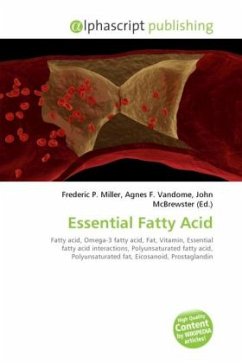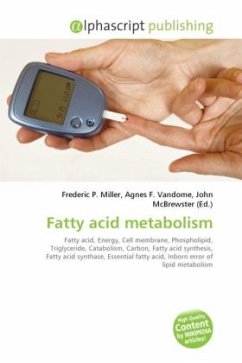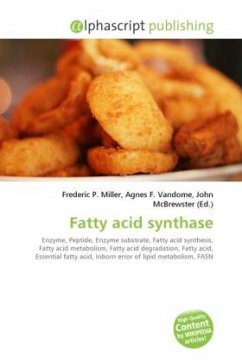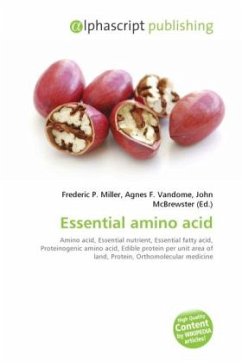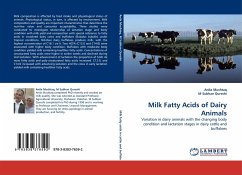
Essential Fatty Acid Interactions
Versandkostenfrei!
Versandfertig in 6-10 Tagen
26,99 €
inkl. MwSt.

PAYBACK Punkte
13 °P sammeln!
The actions of the -3(Omega-3) and -6(Omega-6) essential fatty acids (EFAs) are best characterized by their interactions; they cannot be understood separately. For introductory details to this topic, including terminology and -3 / -6 nomenclature, see the main articles at Essential fatty acid and Eicosanoid. Arachidonic acid (AA) is a 20-carbon -6 essential fatty acid. It sits at the head of the "arachidonic acid cascade" more than twenty different signalling paths that control a wide array of bodily functions, but especially those functions involving inflammation and the central nervous syste...
The actions of the -3(Omega-3) and -6(Omega-6) essential fatty acids (EFAs) are best characterized by their interactions; they cannot be understood separately. For introductory details to this topic, including terminology and -3 / -6 nomenclature, see the main articles at Essential fatty acid and Eicosanoid. Arachidonic acid (AA) is a 20-carbon -6 essential fatty acid. It sits at the head of the "arachidonic acid cascade" more than twenty different signalling paths that control a wide array of bodily functions, but especially those functions involving inflammation and the central nervous system.[2] Most AA in the human body derives from dietary linoleic acid (another essential fatty acid, 18:2 -6), which comes both from vegetable oils and animal fats. In the inflammatory response, two other groups of dietary essential fatty acids form cascades that parallel and compete with the arachidonic acid cascade. EPA (20:5 -3) provides the most important competing cascade. It is ingested from oily fish or derived from dietary alpha-linolenic acid found in, for instance, hemp oil and flax oil. DGLA (20:3 -6) provides a third, less prominent cascade.



